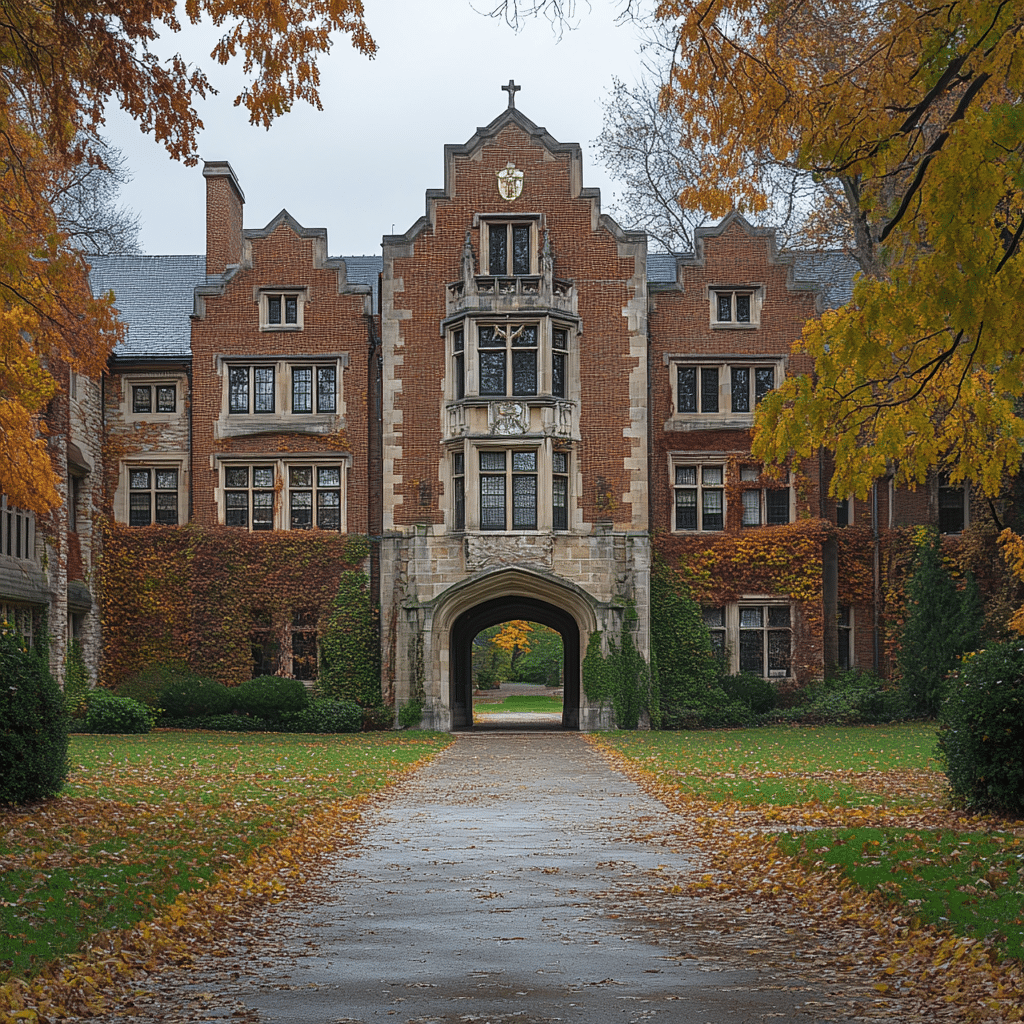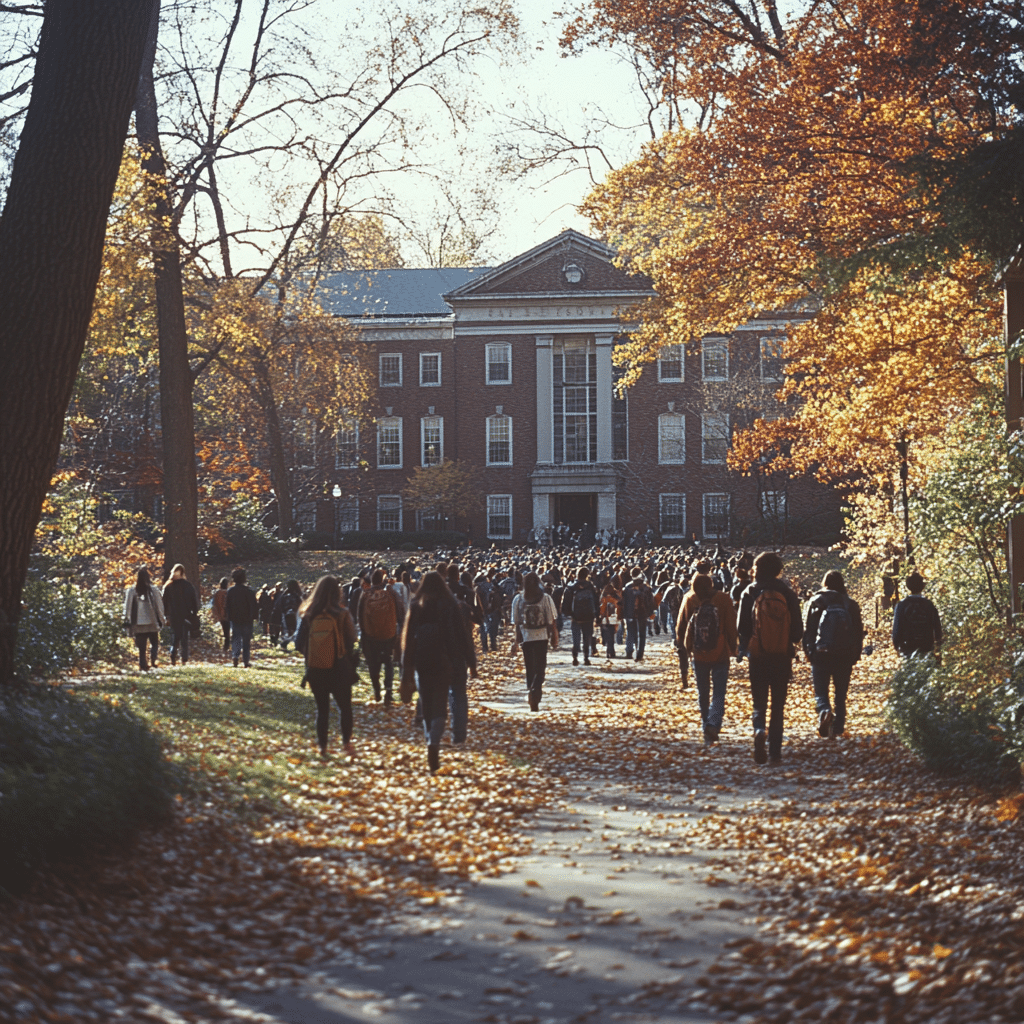Colleges Enrollment Nightmare: A Students Future at Risk
The college enrollment nightmare is creating waves in 2024, leaving students’ futures hanging in the balance. With a perfect storm brewing from post-COVID-19 disruptions, declining birth rates, and ever-increasing tuition costs, colleges are scrambling to adapt. This dilemma not only affects institutions but also paves the way for potential changes in how students view higher education. The ongoing upheaval raises questions about the effectiveness and accessibility of college as we know it.
As pundits have highlighted, enrollment rates have plummeted due to factors like students favoring practical skills over traditional degrees and the rising appeal of trade schools. In the throes of this enrollment nightmare, colleges must grapple with long-term ramifications not just for themselves, but for current and future students. Let’s explore what’s causing this crisis and how students might find a way forward.
The Current State of College Enrollment Disruption
As we dive deeper into the college enrollment nightmare, it’s clear that this disruption stems from a blend of shrinking high school graduation rates and a shifting perception towards degrees. Jeffrey Selingo aptly describes this as a “poorly designed system in need of long-overdue improvements.” Numerous students now feel wild cards in a game stacked against them, leading to choices that miss the mark on what education should ideally offer.
Declining birth rates have left academic institutions with a limited pool of prospective students. Higher tuition fees and the burdensome student debt average of about $37,000 contribute to a sentiment that college is increasingly out of reach. Meanwhile, students explore alternatives that promise skills relevant to today’s job market. They find themselves bombarded by choices, navigating a complex economy that demands more from educational institutions than ever before.
Another key aspect of this enrollment nightmare is how institutions pivot in response to growing competition. With fewer students, colleges are now hustling to enhance their appeal. Establishing connections with industries and providing more financial incentives has become the new normal, which has led to a “mass gainer” effect where colleges inflate offers, putting financial pressure on themselves. Students need to remain vigilant while weighing their options.

Top 7 Factors Behind the Colleges Enrollment Nightmare
The U.S. Census reveals that birth rates have plummeted to an all-time low of 1.7 children per woman in 2020. This trend translates to fewer high schoolers entering colleges, leading to diminished freshman applications across the board. Institutions like Northeastern University are feeling the effects, and colleges must reassess their recruitment strategies to adjust to this harsh reality.
As the pool of prospective students dwindles, colleges are now embroiled in fierce recruitment battles. Schools such as the University of Southern California and New York University are devising enhanced financial aid packages to woo applicants. However, this scramble for students has triggered the “mass gainer” phenomenon, resulting in budgets stretched to their limits and sustainability questioned.
There’s no denying that the soaring costs of higher education are forcing students to reconsider their options. With loans averaging around $37,000, many are leaning toward trade schools and online programs. Platforms like Coursera and Skillshare are now booming, representing a major shift in how students approach their education. They’re concerned with practicality and minimizing debt, a hallmark of today’s educated youth.
A noticeable shift is underway, with younger generations prioritizing skills that guarantee employment over traditional degrees. Institutions like Georgia Tech and Purdue University have already embraced this trend by developing pathways aligned with industry needs. Meanwhile, many liberal arts colleges find themselves struggling to stay relevant, risking becoming relics of the past.
Travel restrictions and visa complications have hindered international student enrollment considerably. Data shows a stark 15% drop in enrollment from abroad compared to pre-pandemic levels. This decline affects universities both financially and culturally, diminishing the rich diversity that international students often contribute to campus life.
The pandemic catalyzed a rapid shift to remote learning, reshaping student expectations about education. Even prestigious institutions like Stanford and Harvard have adapted. More students are opting out of traditional settings, favoring flexible online education that allows them to juggle responsibilities and lifestyles while still obtaining knowledge.
Mental health issues intensified during the pandemic, putting many high school seniors in a state of uncertainty about their futures. Some now struggle with the transition to college life as they prioritize mental wellbeing. Institutions that once boasted bustling campuses are seeing lower enrollments as students opt for alternatives that prioritize their health and emotional stability.
The Future Prospects for Students Amidst the Chaos
Amid the enrollment nightmare is an opportunity for students to carve new pathways that reflect their high potential. Many young individuals are exploring creative avenues, including technical certifications, community colleges, and online platforms. Take IBM’s Skills Academy, for example. It offers valuable practical experience in technology without the burden of a traditional four-year degree. This shift signifies a major rethinking of how education serves students’ needs today.
Many graduates are logging onto their favorite tech tools to build portfolios that demonstrate their real-world experience, showcasing skills to potential employers. In an ever-changing workforce landscape, adaptability and skill acquisition have become paramount. Students recognizing this are wisely investing their time in endeavors that promise better returns, both professionally and financially.
Colleges should be aware that the landscape is changing, and they need to work in the students’ best interests. Our education system must adapt to these shifts and prioritize students’ needs while remaining financially viable. This evolution holds the potential to reshape public perception about the value of college and how it fits into the larger career picture.

Innovative Approaches Colleges Can Employ
To break through the colleges enrollment nightmare, institutions can adopt innovative approaches that resonate with the modern student. Here are a few strategic ideas:
The world of higher education is indeed going through a tumultuous phase, but hope remains. With these forward-thinking strategies, colleges can combat the enrollment nightmare while shaping a brighter future for students. The challenge now lies in their ability to adapt, innovate, and put students’ needs at the forefront of their mission.
In conclusion, the colleges enrollment nightmare doesn’t just present challenges; it can also lead to transformative change. By exploring fresh options and adapting to the times, many students can find teamwork and training that lay the foundation for success. The onus now rests squarely on our educational institutions.
Colleges Enrollment Nightmare: A Wild Ride for Students
It’s been quite a rollercoaster for students trying to navigate the recent colleges enrollment nightmare. With the surge in applicants and the sheer competition, many hopefuls are left scratching their heads. In some places, this frenzy resembles a jam-packed stadium on game night. Just like how fans line up for the Real Madrid Vs Man city Lineups, students are ready to battle for their spot. Did you know that in some universities, admissions committees have had to implement last-minute changes just to keep up with demand? Talk about a headache!
Crunch Time for Students
Another wild twist? The financial implications of this enrollment chaos can be staggering. Imagine applying for a mortgage, but finding yourself confused about the Pennymac mortgage Login process while you should be preparing for classes! Well, students are feeling that same kind of stress, as tuition rates climb and resources dwindle. With many institutions rethinking their recruitment strategies, students can’t afford to sit idly by. Interestingly, institutions are also turning to tech, somewhat like relying on an Electrolux vacuum for a thorough cleanup—only this time, it’s to tidy up their enrollment processes!
A New Game Plan
While everyone’s scrambling, there’s an underlying question: what’s next? As students face this colleges enrollment nightmare, they’re becoming more resourceful, much like those searching cerca de mi ubicación for the best local support services. Some universities are adjusting their offerings to align with a more contemporary approach to education, tapping into what young adults today really value. Just think about how there are now memes, like minion Memes, popping up all over social media, cleverly shedding light on these very issues. Sometimes humor is the best approach, right?
As we reflect on these transformative times, it’s a tough call for students. The educational landscape is more unpredictable than ever, but that doesn’t mean students can’t find a silver lining. They’re learning to adapt—the same way weather forecasts like Aurora IL weather reports help locals gear up for unexpected storms. So to all students bracing themselves for this wild ride, remember there’s strength in community and knowledge as you tackle this enrollment nightmare head-on!

Why are colleges facing an enrollment nightmare?
Colleges are grappling with an enrollment nightmare due to several factors, like over-enrollment issues from previous years leading to housing shortages, and students applying to more schools, making acceptance rates plummet.
Why are Gen Z not going to college?
Gen Z is steering away from college for a variety of reasons, mainly the soaring costs associated with higher education. Many opt for trade schools instead, seeing them as a more practical and financially sound choice.
Are less people going to college in 2024?
There’s been a slight uptick in postsecondary enrollment in 2024, with a 2.6% increase compared to the previous year, indicating a bit of a rebound after a decline in earlier years.
Why are college admissions so bad this year?
College admissions are tough this year because more students are applying to a similar number of spots, making competition fierce, and many schools are still recovering from earlier over-enrollment issues.
Why is US college enrollment declining?
U.S. college enrollment is in decline largely due to factors like rising tuition costs, changing job market demands, and a growing interest in trade schools among young people.
What is the biggest problem facing college students?
The biggest problem facing college students today is the financial burden, with tuition rates climbing and the debt that comes with it weighing heavily on graduates as they enter the workforce.
Why are people not going to college anymore?
Many folks are forgoing traditional college paths mainly because of the high costs and a shift in mindset toward valuing skill-based careers, leading to a trend where trade schools are becoming more attractive.
Is Gen Z more educated than millennials?
In general, Gen Z is seen as more educated than millennials, especially due to their increased access to information online and a preference for alternative education routes.
What generation went to college the most?
The generation that has gone to college the most is the millennials, who flocked to higher education in large numbers as college became more accessible.
What states are losing college graduates?
Some states are losing college graduates due to economic factors, job opportunities, and sometimes, the quality of education offered, leading many to seek jobs elsewhere after graduation.
What is the enrollment cliff?
The enrollment cliff refers to the predicted drop in college enrollment expected in the coming years due to decreasing numbers of high school graduates, which could significantly impact colleges and universities.
How many people don’t regret going to college?
About 70% of college graduates say they don’t regret their decision to go to college, as the experience often leads to better job opportunities and earning potential over time.
What is the college enrollment cliff 2027?
The college enrollment cliff of 2027 refers to the anticipated drop in college enrollment as a result of the decreasing number of high school graduates entering the education pipeline.
Which colleges get the most applications?
Elite colleges tend to get the most applications, often due to their reputations and perceived value, leading to extremely low acceptance rates for applicants.
Why are colleges getting so hard to get into?
Colleges are getting tougher to get into because of increased competition, with more students applying to fewer spots each year partly thanks to the ease of online applications.
Why is going back to college scary?
Going back to college can feel scary because of the financial costs, fear of not fitting in, or worries about balancing studies with other responsibilities, especially for older students returning to education.
Why are college admission rates going down?
College admission rates are going down mainly due to universities receiving a record number of applications, coupled with more students looking for limited spots which drives the competition higher each year.
What is the college enrollment cliff 2025?
The college enrollment cliff of 2025 reflects concerns about a significant drop in college enrollment as high school graduation rates decline, which raises alarms for future financial sustainability in higher education.
Why are colleges struggling?
Colleges are struggling right now due to a combination of dwindling enrollments, financial pressures, and challenges like adapting to new educational demands in a competitive job market.





















